It may be acknowledged at once that the chronology of the time of Jeremiah the Prophet bristles with minor difficulties, though the broad outline is easy to follow. At first glance the chapters of the Book of Jeremiah appear to have little or no chronological order or arrangement.
Chapter 25 is, for instance, eight years earlier than chapter 24; and the fourth year of Zedekiah (Jeremiah 28:1), the ‘last king’ of Judah, is seemingly said to be “the same year” as “the beginning of the reign of Jehoiakim” (27:1), who died three months before Zedekiah ascended the throne (II Kings 24:6, 8, 17); while the names of Jehoiakim and Zedekiah appear to be quite confounded in Jeremiah 27:1,3. Even other portions of the Scriptures dealing with this period present chronological problems. II Chronicles 36:9 apparently contradicts II Kings 24:8 regarding Jehoiachin’s age. I Chronicles 3:15 makes Shallum to be younger than Zedekiah, but Jeremiah 23:11, 12 surely identifies Shallum as Jehoahaz, who was not younger, but thirteen years older than Zedekiah according to II Kings 23:31 and 24:18.
To the one who believes that “EVERY WORD of God is pure” i.e., entirely free from corruption, and therefore fully trust-worthy, as the prophecy of Agur states (Proverbs 30:5), these points present a difficulty. Are they the pure word of God? Very readily some have dismissed the problems as “scribal errors.” But this involves further difficulties. It would mean that God had not preserved His word intact, despite His declarations that He has done so (Psalm 12:6, 7; Matthew 5:18, 24:35).
Can solutions be found to these difficulties? It is believed the solutions will be found, not only for those difficulties listed above, but for many others not mentioned.
The following study endeavors to bring out the chronological arrangement of the Book of Jeremiah, and offers suggestions which it seems solve the other chronological problems. It is not claimed that these suggestions are perfect, nor the final solution. They are set forth because it is felt they give a reasonable explanation, and thereby show that there is not the slightest need to ascribe the difficulties to the slip of a careless scribe, nor to think that error has been permitted to creep into God’s pure word.
The “Lachish Letters” are also dealt with. So important an archeological discovery can hardly be omitted. The letters fit so perfectly into Jeremiah’s writings, confirming their trust-worthiness (if that is needed!) and enlarging our knowledge of those times. In fact, they seem to add a fascinating bit to the history of the Prophet himself!
PART I. HISTORICAL BACKGROUND OF JEREMIAH’S TIME
Before setting forth the historical background of Jeremiah’s writings, it is necessary to establish some sort of a chronological basis for our study. A convenient date from which to calculate forth and back, and linking Biblical and Babylonian history, is the accession year of Nebuchadnezzar, commonly dated 605 B.C. This date is selected, not because it is unquestionably correct, but because of its convenience. Any alteration that has to be made to that … date will affect the rest of our dates an equal amount.
Strangely enough, this date, so much used by the year-day prophetic writers, can be demonstrated from Babylonian sources to be erroneous. A brief demonstration follows, as some of these facts must be referred to later in this study.
In the contract tablets of Egibi, a Babylonian “banker,” we have a series of dated tablets pretty well covering the period of the Babylonian Empire. (See list of these in Lieut. Col. A. G. Short’s “Chronology of the Kings of Israel and Judah,” Journal of the Transactions of the Victoria Institute, Vol. LXIV). By these we will reckon the time back from Cyrus to Nebuchadnezzar.
Cyrus took Babylon in the 17th year of Nabuna’id (Nabonidus), the Nabuna’id-Cyrus Chronicle informs us (Translation in “Archeology and the Bible,” by G. A. Barton, Chap. 20, pp. 443. 444, IVth edition) the common dating for this is 538 B.C.
Now the Babylonians used the Exclusive method in reckoning a king’s reign. The year in which a king came to the throne was called his “accession year.” The next calendar year is called his “first year.” So, if 538 B.C. was Nabuna’id’s 17th year, his accession year was 555.
The earliest tablet of Egibi in Nabuna’id’s accession year is dated the 12th day of Month 4. (The Babylonians, like the Hebrews, used a Vernal Year Month, I being March-April. Unless otherwise specified all dates in this study refer to the Vernal years.) This shows he had taken the throne at some time before that date in that year. The next earlier tablet is dated as in the 4th year of Nergalshareser, on the 12th day of Month 12. This could not be in the year of Nabuna’id’s accession, so can be put in the preceding year, 556 B.C. That being Nergalshareser’s 4th year, his accession year would be 556+4, or 560 B.C.
Then the earliest tablet of Nergalshareser’s reign we find is dated in his accession year, 560 B.C., on the 27th day of Month 8. The next preceding tablet is marked as the 2nd year of Evil-Merodach (Amil-Marduk), the 5th day of Month II. The month dating shows that this could not be in the same year as Nergalshareser’s accession so must be put back into the preceding year, 56I B.C. Then, with that year as the 2nd of Evil-Merodach, his accession would be in 563 B.C.
Before this, Nebuchadnezzar reigned 43 years. This puts Nebuchadnezzar’s accession back to 606 B.C., one year earlier than by the commonly accepted chronologies. Indeed, if we apply the same exact reckoning to the tablets of Egibi and his son, calculating back from 486 B.C. as the 36th year of Darius I., we find Nebuchadnezzar’s accession comes as early as 608 B.C. And still no allowance is made for the 9 months’ reign of Labashi-Marduk between Nergalshareser and Nabuna’id, not mentioned in the tablets.
The above facts show that our chronologies are not by any means firmly settled. Nevertheless, for this study, 605 B.C. is used as the accession year of Nebuchadnezzar and the basic date for calculating, for to attempt to establish the correct date would involve a very extensive study. Should future investigations of chronologists and historians establish an earlier date for Nebuchadnezzar’s accession, then the rest of the dates in this study must be raised a like amount.
JOSIAH AND THE FALL OF ASSYRIA
The chronological statements in the first three verses of Jeremiah 25 are vital to the chronology of the closing days of the Kingdom of Judah. They not only link the Hebrew and Babylonian date systems, but supply a positive link back into Josiah’s reign. Here we are told that Jehoiakim’s 4th year was contemporary with Nebuchadnezzar’s 1st year, 605-604 B.C. (It should be remembered that the Scriptures invariably use the Exact method of reckoning a king’s reign, whether of Hebrew or Gentile. That is, each year of a king’s reign is reckoned from the actual accession date, and thus was not made to coincide with the calendar year, as with the Babylonians. For proofs “Bible Chronology from Solomon to Hezekiah,“) Hence, Jehoiakim’s 1st was 608-607 B.C. Before this Jehoahaz reigned 3 months and Josiah 3I years (II Kings 22:1, 23:31). But this leaves us in doubt as to whether Josiah’s reign began late in 640 or early in 639 B.C. However, Jeremiah 25:3 settles the point. 605-604 was “_the three and twentieth yea_r” from the commencement of Jeremiah’s prophecies in “the thirteenth year of Josiah.” This would make the 1st-year of his prophetic work 627-626, and that being the thirteenth of Josiah, his reign began early in 639 B.C.
Now the events surrounding Josiah’s death in 608 B.C. are of particular historical importance. In that year Pharaoh-Necho of Egypt “_went up against the king of Assyria to the river Euphrate_s” (II Kings 23:29), where he fought “against Carchemish” (II Chronicles 35:20). It was once thought that here must be some error, and that Necho at this time fought with Nebuchadnezzar, king of Babylon, since Nineveh, the capital city of Assyria, had already fallen. But men might just as well have fully trusted the Scriptures here. As we follow out the rise of Babylon and the fall of Assyria, in connection with the historical background of Jeremiah’s writings, we shall find that God’s word was correct all the time.
A tablet in the British Museum, the lone survival of a series describing the reign of Nabopolassar, Nebuchadnezzar’s father, tells the story of the fall of Nineveh. (Barton: “Archeology and the Bible,” IVth ed., pp. 492-494) The tablet begins with the 10th year of Nabopolassar, who reigned 21 years, 626-605 B.C. His 10th year was accordingly, 616 B.C., eight years before Josiah’s death, and during the early prophecies of Jeremiah.
In that year, the tablet tells us, Nabopolassar twice defeated the Assyrian army. In the second battle the Assyrian army had been bolstered by a large Egyptian force. So we can see that Egypt, at that time under Psamtik I, was still holding to Assyria.
In the following year, 615 B.C., Nabopolassar again invaded Assyria, but was repulsed, though winning some battles. “The Mede,” the strong ally of Nabopolassar, also invaded the land.
The next year, 614 B.C., which was Nabopolassar’s 12th, “the Mede” attacked Nineveh, and took several cities. Nabopolassar also moved an army into Assyria, and after making a covenant with Kyaxares “the Mede,” each returned to his own land.
In 613 B.C., the following year, hostilities again broke out on the borders of Assyria and Babylonia. Nabopolassar was turned back before the Assyrian forces.
But in 612 B.C., the 4th year of Nabopolassar, the Medes and Babylonians made a concerted attack upon Assyria with huge successes. Nineveh was taken and “_turned into a mound and a rui_n,” as foretold by Nahum. Sinsharishkon, the king of Assyria, was slain. But in spite of this the Assyrian Empire did not immediately collapse. Its western portion hung together four years longer. Ashuruballit, when Nineveh fell, was at once crowned king of Assyria in the city of Harran.
After taking several other Assyrian cities in 611, Nabopolassar, in his 16th year, 610 B.C., advanced against Ashuruballit in Harran.
The tablet states:
“Ashuruballit and the army of … which had come to his help-the fear of the enemy fell upon them, and they crossed (the river),” that is, the Euphrates. Thereupon Nabopolassar captured the city of Harran.
The army which came to help Ashuruballit was probably drawn from Syria or Egypt, and may even have come in part from Judah. At that time Josiah was still a faithful vassal of Assyria.
When Ashuruballit retreated across the Euphrates River, it appears, from II. Chronicles 35:20 that he retired to the fortified city Carchemish, west from Harran. Evidently in the following year, 609 B.C. (the tablet appears to have accidentally omitted the year date), in the month Tammuz (June-July), the Assyrian king with the aid of a large Egyptian army endeavored to retake Harran. In this he was unsuccessful, and Nabopolassar made further gains.
Now all these events were of great concern to Judah. Judah formed part of the western portion of the Assyrian Empire, and the slow steady advance of Babylon spelled the doom of that Empire. A people called “Unnanmanda” (? Scythians from Southern Russia) also aided in bringing about the downfall of Assyria, helping Nabopolassar in 612 and 610 B.C. These people from the distant north may well have been included in the meaning of the “seething pot; and the face thereof is toward the north,” of Jeremiah’s first vision (Jeremiah 1:13-15, 25:9, etc.).
This last year, 609, was the last year of the reign of Psamtik I over Egypt. As he supplied a large army to Ashuruballit at that time, it is evident he remained faithful to Assyria as long as he lived, as did Josiah of Judah.
With the commencement of the following year, 608 B.C., the tablet suddenly concludes with the words that Nabopolassar in his 18th year again mustered his army. If the next tablet of the series is found we will have the continuation of this story from Babylonian sources. However, we know that that year saw Necho on the throne of Egypt, and he immediately reversed the policy of his father Psamtik. Throwing off his allegiance to Ashuruballit, Necho marched II to the river Euphrates against “the king of Assyria” in Carchernish. Taking up the story, the Scriptures inform us that Josiah, evidently bent on remaining faithful to Assyria to the last, assayed to halt Necho’s advance at Megiddo, and perished in the ensuing battle (II Kings 23:29; II Chronicles 35:20-24). Passing on, Necho dealt the final blow to Assyria.
Thus with Nabopolassar before and Necho behind, the last remnants of the Assyrian Empire were quickly wiped out. This left the Euphrates the boundary between two new empires, Babylon and Egypt.
THE SONS OF JOSIAH
Several of Josiah’s sons came to the throne of Judah. At first sight there seems to be some contradictory statements concerning them, but it is believed the following explanations will solve all the difficulties.
Josiah, it is believed, had five sons. The first four are listed in order in I Chronicles 3:15. They were:
- Johanan, born before 633 B.C. He is not again mentioned.
- Eliakim or Jehoiakim, born 633 B.C. (II Kings 23:34, 36).
- Zedekiah (I), born about 632 B.C.
- Shallurn or Jehoahaz, born 631 B.C. (II Kings 23:31-33; Jeremiah 22:11, 12).
- Mattaniah or Zedekiah (II), born 618 B.C. (II Kings 24:17, 18).
The reigns of several of these sons form the historical background to the main portions of the Book of Jeremiah.
JEHOAHAZ III AND JEHOIAKIM, 608-598
(This king is called Jehoahaz III, as he was the third king of Judah to bear this name in historical records. The first is in II Chronicles 21:17 also called Ahaziah. The second was Adaz whom the Assyrian inscriptions style Jehoahaz.)
Shallurn or Jehoahaz III, the fourth son of Josiah, was the first to reign after his father. He was the choice of the people, but Necho dethroned him after he had held the kingship a brief three months in 608 B.C. Carried to Egypt; this son, who had “reigned instead of Josiah his father,” died in that land (II Kings 23:30-34; II Chronicles 36:1-4; Jeremiah 22:11, 12).
Eliakim or Jehoiakim, the second son of Josiah, was the next to reign. During the time he occupied the throne, Judah passed from under the control of Egypt to that of Babylon. A number of chapters in Jeremiah are dated to his reign, 608-598 B.C.
What occurred during the beginning of Jehoiakim’s reign, 608-606, we do not know with certainty. It seems that the Babylonian forces continued their westward advance, at first under Nabopolassar himself, and then under his son Nebuchadnezzar, while the ageing Nabopolassar remained at home in Babylon.
There was evidently a co-regency, for Scripture calls Nebuchadnezzar “king” a year before his father died. Then suddenly the Scriptures pick up the story thus:
In the third year of Jehoiakim, 606-605 (Daniel 1:1-3), Nebuchadnezzar marched against Jerusalem. The city was besieged and taken. Part of the Temple vessels were carried to Babylon, as well as certain captives, among whom were Daniel and other princes. A comparison of Daniel 1:1-3 with II Chronicles 36: 6, 7 shows such similarity, that we may conclude both refer to the same event. Thus it was probably in this very early invasion that Jehoiakim was bound with fetters with the intention of carrying him also to Babylon.
This invasion was certainly before the death of Nabopolassar, Nebuchadnezzar’s father, for after Daniel had remained three years in Babylon it was then but the second year of Nebuchadnezzar’s reign by Hebrew reckoning, 604-603 (Daniel 1:5, 18, 2:1). The three years must therefore have begun in 606 B.C.
According to the Berosus tradition, Nabopolassar died while Nebuchadnezzar was on this, his first expedition to Syria. Upon receiving the news, he left his main forces to return by the usual more northerly route, via the Euphrates, while he with light troops hurriedly crossed over the desert directly to Babylon to assure to himself the throne (Josephus against Apion. 1. 19). From this it seems that the expedition into Judea was abandoned, and Jehoiakim restored to the throne. Anyway, early in the three years of Daniel 1:5, 606-603, Pharaoh-Necho appears to have quickly and easily regained sway over Palestine and Syria also.
It was evidently quite early in the fourth year of Jehoiakim that Nebuchadnezzar began to reign (Jeremiah 25:1). The earliest tablet of Egibi the “banker,” in Nebuchadnezzar’s reign, is dated to his accession year, 605, the 7th day of Month 8 (Oct.-Nov.). It is clear, therefore, that the accession of Nebuchadnezzar took place in October or somewhat earlier. This point is important, as we shall see later.
The accession time of Jehoiakim is arrived at thus. We saw before, that, in the year in which he came to the throne (608), Necho slew Josiah, after which Jehoahaz III reigned three months. It is not unreasonable to suppose that Necho’s advance up through Palestine was early in the Vernal year, “at the time when kings go forth to battle” (cf. II. Samuel 11:1), hence about early April. Then the three months of Jehoahaz III ran from April to July, when he was succeeded by Jehoiakim.
Neither could Jehoiakim’s reign have started later than July. Jehoiachin reigned three months after Jehoiakim, and these three months ended in Month I (April), early in the Vernal year 597 B.C. (II Chronicles 36:10). Jehoiakim’s death and the accession of his son, three months before this, therefore occurred in January, 598 B.C. (Vernal year). This gives Jehoiakim a reign of IO years and 6 months, from July, 608, to January, 598. Had the reign been any shorter than this it could not have been recorded as an eleven year reign. (Bible Chronology from Solomon to Hezekiah) So we conclude definitely that Jehoiakim’s reign began early in July.
Now at sometime within Jehoiakim’s fourth year (July 605 - July 604) Nebuchadnezzar I defeated Necho at Carchemish by the Euphrates (Jeremiah 36:2). It is impossible for this to have occurred before Nabopolassar’s death. We have seen that Nebuchadnezzar ascended the throne of Babylon in October or earlier, 605 B.C. There is certainly not sufficient time between July and October for Nebuchadnezzar to have met and defeated Necho at Carchemish, to have advanced through Syria, to besiege and take Jerusalem, and then to journey all the way back to Babylon. Beside this, both the Scriptures and the Berosus tradition tell us Nebuchadnezzar had already advanced far beyond Carchemish into Syria before Jehoiakim’s fourth year. Consequently there must have been a falling back of the Babylonian forces after that, at least as far as Carchemish, and we are compelled to place the Carchemish battle late in Jehoiakim’s fourth year, some time after Nabopolassar’s death. It seems that when Nebuchadnezzar abandoned his western expedition upon the news of his father’s death, the whole sea-coast and all Syria reverted at once to Egypt. But Nebuchadnezzar, having quickly settled affairs in Babylon, promptly returned to the west. At Carchemish he found he was faced with the Egyptian army, who now occupied the country. This army he defeated some time before July, 604, probably about June. Nebuchadnezzar then proceeded to conquer Syria and Palestine to the borders of Egypt during the years 604-602 B.C. The battle of Carchemish was the first step in this conquest and reoccupation.
It was also in this year, the fourth of Jehoiakim, that Jeremiah wrote the book of prophecies, which the king later cut up and burnt (Jeremiah 36:1, 2). In the ninth month of Jehoiakim’s fifth year, which would be December, 604, B.C., Baruch had read this book of prophecies when a fast was proclaimed (vs. 6, 9).
It has been supposed that this fast was proclaimed because of the near approach of Nebuchadnezzar’s forces. But, whatever the reason for the fast, it is clear that at that date Jeremiah was still predicting that Nebuchadnezzar would conquer Judah (Jeremiah 36:29-31), showing that the conquest of Palestine and Syria had not yet reached Judah.
While this proves that the conquest of Judah occurred some time after December, 604, Scripture nowhere states in what year it did occur.
However, there is a very fragmentary inscription of Nebuchadnezzar’s telling of a western campaign in his third year (Babylonian reckoning, so 602 B.C., reading in part as follows:
“… inhabitants of the Hittite country, in the month Airu, of the third year of (Nebuchadnezzar king of) Babylon opposed his troops. Nebuchadnezzar) summoned his troops, in 13 days to (the Hittite country) he marched. Of the people inhabiting Ammanu (i.e., Anti-Lebanon) … their heads he beat off … (upon poles) he hung…” (R. W. Rogers: “Cuneiform Parallels to the Old Testament” pp. 369, 370)
It is quite possible that this expedition, which we know from the inscription, went as far as Anti-Lebanon, may have gone on south and have included Judah. Lacking any other definite Information as to when Nebuchadnezzar came into the west after the year 604, this inscription is accepted as supplying the date of the conquest of Judah, viz., 602 B.C.
Jehoiakim served the king of Babylon three years (II Kings 24:1), and following the above date this would be from 602 to 599 B.C. Then he rebelled, and in 599 and 598 he was subjected to incursions by bands of Chaldees, Syrians, Moabites, and Ammonites, which devastated Judah (vs. 2).
In Nebuchadnezzar’s seventh year (Hebrew reckoning), which ended about October, 598 B.C., 3,023 Jews were carried captive by Nebuchadnezzar (Jeremiah 52:28). Evidently, then, Nebuchadnezzar was already come to quell the revolt. The late Mr. J. L. Starky, when excavating the site of Lachish, found a burnt layer in the ruins belonging to this period. We may gather from this that the city Lachish was at least partially destroyed at that time, and it may be some of the captives mentioned came from that city.
Later in the year, early in January, Jehoiakim died. Necho, the king of Egypt, had failed to come to Jehoiakim’s aid in this revolt against Babylon (II Kings 24:6, 7). Then Jehoiakim’s son, variously known in Scripture as Jehoiachin, Jeconiah, or Coniah, came to the throne.
JEHOIACHIN AND ZEDEKIAH I, 607-597 B.C.
Jehoiachin, whose reign began in January, 598 (Vernal year), reigned three months and ten days. All this time Nebuchadnezzar was evidently still in the land, engaged in subduing the rebellion of Judah. But Jehoiachin capitulated, giving himself up to the besieging forces. “When the year was expired,” that is, in the month Nisan (April), 597 B.C., he was taken a captive from Jerusalem to go to Babylon (II Chronicles 36:9&10; II Kings 24:8-16). This was in the eighth year of Nebuchadnezzar (II Kings 24:12).
Now there is a peculiar difference in the age of Jehoiachin as given in Kings and Chronicles in the above references. Kings gives his age as 18, but Chronicles asserts he was but 8. While at first this appears to be a “copyist’s error,” yet the suggestion is here made that both statements are quite accurate.
That Jehoiachin or Coniah was 18 at the commencement of his three months’ reign, all are ready to admit. But before this, while Jehoiakim was living, Coniah was “sitting upon the throne of David.” This we find in Jeremiah 22 verses 11, 12 refer to the reign of
Shallum or Jehoahaz III as already past; verses 13-23 speak of Jehoiakim as the reigning king; and then verses 24-30 proceed to address Coniah as one in authority practically equal with his father, occupying the throne and ruling in Judah. In pronouncing the curse against Coniah and his seed, Jeremiah prophesied, “No man of his seed shall prosper, sitting upon the throne of David, and ruling any more in Judah.” From this, we gather that Coniah was really co-king over Judah during Jehoiakim’s lifetime.
We have no record as to the date at which Coniah was elevated to this position, except it be the mention in Chronicles that he “was eight years old when he began to reign.” It is an undeniable fact that the Hebrew Scriptures at times treat two different dates for the beginning of a king’s reign in a single sentence, almost as if but one event were in view. (For a clear instance, see I. Kings 16: 23, where two dates 4 years apart are involved. See “Bible Chronology from Solomon to Hezekiah” under the heading Contacts of Menahem of Israel with Pul or Tiglath-pileser IV.) It is, therefore, not violating any Scriptural usage to understand II Chronicles 26:9 to mean that “Jehoiachin was eight years old when he began to reign” in association with his father, “and he reigned three months and ten days” alone, after his father’s death.
As Jehoiachin was 18 in January, 598 (Vernal year), he was 8 in January, 608, six months after Jehoiakim began to reign. The co-regency may have begun a while before this or a while after. We have chosen Nisan (April), at the beginning of 607 B.C., as the approximate date.
In that year affairs in Syria and Palestine were doubtless very disturbed. Pharaoh-Necho, who had, with one stroke, just seized the whole territory from the dying hands of Assyria, had returned to Egypt, but was drawing heavy taxation from Judah (II Kings 23:34, 35). The Babylonian forces were doubtless active in the far north, threatening to press southward through Syria from Harran, and in the following year, 606, actually took Jerusalem. By elevating his young son to be his associate on the throne, Jehoiakim would be ensuring, to some extent, the kingdom to his line, should he himself be lost in the wars of those troublous days. That Jehoiakim had very real reasons to fear for the succession of his dynasty is shown by the fact of his being bound in fetters the very next year to be carried off to Babylon by Nebuchadnezzar (II Chronicles. 36:6). The sudden death of
Nebuchadnezzar’s father is the factor which altered the situation, restoring Jehoiakim to the throne to continue his reign, with his son as his associate, eight years longer.
During these eight years (606-598), Jehoiakim seems to have taken yet further precautions to ensure his dynasty. Twice, in passages which appear to belong to this period, Jeremiah the prophet speaks of a certain Zedekiah as if “king.” When Nebuchadnezzar made war against Judah (probably in 602 B.C.) it is “king Zedekiah” who asked the prophet to enquire of God for them, and in his reply (chapters 21-22) Jeremiah speaks of not only Zedekiah (21:3, 7), but also of Jehoiakim and Coniah as also ruling (22:18, 24). Again, in Jehoiakim’s reign (27:1) we read of messengers coming to Zedekiah king of Judah (vs. 3). This Zedekiah was evidently another associate with Jehoiakim on the Judean throne.
It is certain that a Zedekiah associating with Jehoiakim, could not be the Zedekiah who reigned later after Jehoiachin’s captivity. The later king did not bear the name Zedekiah until after his accession, being known as Mattaniah during Jehoiakim’s time (II Kings 24:17).
It is far more likely that Jehoiakim’s associate was the Zedekiah of I Chronicles 3:15, the third son of Josiah, and fourteen years older than Mattaniah. While this explanation is put forth on what some might consider slender evidence, it nevertheless is in full harmony with the Scripture passages referred to. It shows that it is entirely unnecessary to believe these passages contain either careless or intended alterations in the text.
Jehoiakim’s associate is distinguished in the rest of this study from the later Zedekiah by being called Zedekiah I. The later king is styled Zedekiah II.
ZEDEKIAH II, 597-586
After the captivity of Jehoiachin, Mattaniah, renamed Zedekiah (II) by Nebuchadnezzar, reigned in Jerusalem for eleven years, 597-586 (II Kings 24:17, 18). The chronological difficulties of his reign are slight indeed. The only points of significance are the dates for the last siege of Jerusalem, and the date of his accession. These points are treated together.
It is clear that Zedekiah did not begin to reign immediately after Jehoiachin’s captivity in April, 597 B.C. Jerusalem was destroyed in Month 5 in Nebuchadnezzar’s nineteenth year (Hebrew reckoning). The nineteenth year ran from Oct., 587, to Oct., 586. Consequently the destruction of the city in the fifth month (II Kings 25:8) of that year of Nebuchadnezzar, could only be in August, 586 B.C. The preceding month, Month 4 (July), was within the eleventh year of Zedekiah II (II Kings 25:3). Hence, it is evident that Zedekiah’s eleventh year, beginning at some date in 587, extended into the year 586 at least as far as Month 4.
Keeping the above point in mind, we gather further information from another source. Jehoiachin was taken captive at the beginning of the calendar year (II Chronicles 36:10), so that the years of his captivity and the calendar years practically coincided. The 1st year of the captivity was 597 B.C.
In the 12th year of the captivity, which would be 586 B.C., in Month 10 (five months after the destruction of the city began), Ezekiel in Babylonia heard the message, “_The city is smitte_n” (Ezek. 33:21). Now it was three years before this, in the 9th year of the captivity, that is, in 589 B.C., in Month 10, on Day 10, that the siege of Jerusalem began (Ezek. 24:1, 2). This date fell in the ninth year of Zedekiah II (II Kings 25:1). As his ninth year ran from 589 to 588, we can see that his ninth year began before Month 10, Day 10.
From these two calculations it becomes definite that the accession date of Zedekiah II came somewhere after Month 4, Day 9, and before Month 10, Day 10. It was therefore four months or more after Jehoiachin’s captivity before Nebuchadnezzar made Zedekiah II king. Provisionally, we may therefore place his accession in Month 5 (Aug.), 597 B.C., from which date all calculations for the reign of Zedekiah II are made.
Zedekiah II was obviously a weak character. He allowed himself to be moved by whichever party pressed its will most earnestly upon him (Jeremiah 38:4, 5; cf. vs. 8-10, 19). Beginning his reign as a vassal of Babylon, he served Nebuchadnezzar up to at least his fourth year (594 B.C.), when he made a visit to the city of Babylon (Jeremiah 51. 59). However, the false prophet Hananiah was then already inciting the common people to support revolt against Babylon, by promising the breaking of the Babylonian yoke “within the space of two full years” (Jeremiah 28. 3, 11). Thus there were two differing factions under the rule of Zedekiah II; one faction, which included the princes, sought freedom from the Babylonian domination, and looked to Egypt for military support; the other faction, to which Jeremiah certainly belonged, if he did not actually lead it, believed submission to Babylon to be the right course.
Moved by the princes’ party, Zedekiah II rebelled against Babylon (II Kings 24:20; II Chronicles 36:13). The exact date of the rebellion is not given. However, we have seen that in his fourth year Zedekiah visited Babylon, so evidently had not revolted at that time.
But by the 6th year of the captivity (592 B.C.) we find Ezekiel the prophet stating of Zedekiah II, “He rebelled against him (Nebuchadnezzar) in sending his ambassadors into Egypt, that they might give him horses and much people” (Ezek. 18:15; for date compare 8:1 and 20:1). We therefore date the rebellion as in that year, 592 B.C., early in the sixth year of Zedekiah.
In 589 Nebuchadnezzar came to put down the rebellion, and made Ribleh in Hamath, well to the north of Palestine, his military base. The siege of Jerusalem began in Month 10 (January). But very soon the siege was relieved, as the Chaldeans retreated quickly due to the movements of the Egyptian army (Jeremiah 37:5-11, 34:21, 22). Prof. J. H. Breasted states that Pharaoh-Hophra (Apries) had landed forces north of Palestine, and had taken Zidon and other Phoenician cities, thus threatening to cut off the besieging forces from their base. (Breasted: “A History of the Ancient Egyptians,” Chapter 28, paragraph 405)
But in the end the Babylonian forces were successful, and Jerusalem fell in Month 4 (July), 586 B.C. The bulk of the people were deported, a handful “of the poor of the people” being left in possession of the land. And most of these, within a short space of time, fled into Egypt, taking Jeremiah with them, leaving the land of Judah truly a desolation.
With this survey of the chronology and the historical background of Jeremiah’s time, we are ready to look into the chronological arrangement of his writings.
PART II. CHRONOLOGICAL ARRANGEMENT OF JEREMIAH’S WRITINGS
After having given our attention to the historical background of Jeremiah’s time; we find on turning to his book that the prophet’s writings fall naturally into four sections or smaller books. Each of these sections, it seems, is in chronological order within itself, though the sections overlap one another and so supplement one another. Each section has its particular topic, around which the series of prophetic utterances cluster.
The four sections are:
Section I, chapters 1 - 24
Section II, chapters 25 - 34
Section III, chapters 35 - 44
Section IV, chapters 44 - 52
SECTION I. THE EVIL OUT OF THE NORTH
Throughout Section I the messages of the prophet seem but to amplify the double message of chapter 1:11-16, The Rod and The Seething Pot -correction and judgment to come “out of the north.”
The dating and chronology of this section are as follows:
Chapter 1. Verses 1-3 are introductory. They give the terminal dating for Jeremiah’s prophetic work in the land under the kings of Judah. He began to prophesy in the thirteenth year of Josiah, which was, as we saw before, 627-626 B.C. The end date is month 5 in the eleventh year of Zedekiah II. This date also we have previously determined to be August 586 B.C.
It should be noted here that Jeremiah mentions the fifth month as “the end of the eleventh year of Zedekiah.” This agrees precisely with our earlier calculation, and confirms the belief that the accession day of this king fell in month 5. This reference to the year of 586 B.C. shows that this first section of prophecies was not completely compiled into book form until that date at least, though the separate prophecies may have been written down earlier.
The date of the first message to Jeremiah is obviously the earlier one, 627 B.C., and to that year it is therefore assigned.
Chapters 2 - 3:5
This First Public Message is really a continuation of the Lord’s words to Jeremiah beginning in chapter 1:4. So it is of the same date, 627 B.C., five years before the Great Revival began (II Kings 22:3 ff).
Chapters 3:6 - 6
Dated only as “in the days of Josiah the king,” the precise time of the giving of this great Message to Backsliding Judah remains uncertain. It was seemingly after the Great Reformation of 622-621 in Josiah’s eighteenth year (3:10), when the nation officially returned to the worship of Jehovah only. It may therefore be dated as about 615 B.C.
Chapters 7 - 10
This Message in the Temple Gate is undated. Probably it was given in Josiah’s reign, about 610 B.C. In passing, it may be noted that portions of chapter 7 bear a marked similarity to words found in chapter 16 (Cf. 7:3 with 26:13; cf. 7:13-15, 34 with 26:6,9; and cf. 7:13 with 26:5) It may be that the brief message in 26:2-6 is a summary of a longer discourse, somewhat similar to the one in 7-10.
The Message on the Mosaic Covenant is also undated. Its probable date is 609 or 608 B.C.
Chapter 13
While the Message on the Linen Girdle is likewise undated, it appears that the message could not be earlier than 607 B. C. Verse 13 uses the unusual words, “Thus saith the Lord, Behold I will fill the inhabitants of this land, even the kings that sit upon David’s throne… with drunkenness.” The plural (kings) cannot refer to the past line of kings from David and onward, for the prophecy says they would in the future be filled with drunkenness. This would be impossible for kings in their graves. The only interpretation that gives sense here is that thee must have been more than one king at the time of the prophecy sitting “upon David’s throne.” And from this time on we find references to “kings” reigning in Judah. (Jeremiah 17:19,29; 19:3,13) that plainly speak to us of a plurality of kings at the one time. We have already seen that in 607 BC Jehoiachin evidently became the associate of Jehoiakim on the throne of Judah, and that Zedekiah I was also an associate. The references to reigning “kings” must therefore belong to this period of co-regency, from 607 B.C. to 598 B.C. Chapter 13:13 evidently belongs to the early part of the co-regency, and hence we date the passage to 607 B.C. The “many days” of verse 6 probably carry the first part of the chapter (vs. 1-5) back into 608 B.C.
Chapters 14 - 15
These give a message concerning the Dearth. As we do not know when this drought occurred the prophecy remains to us undated. Following the date of the preceding message, we may date this one as about 606 BC. It would therefore not be far from the time of Nebuchadnezzar’s first invasion, but no specific reference to this event seems to appear in the message.
Chapters 16 - 17:18
The Message drawn from the Prophet’s Unmarried State is undated. It also is a warning of the approaching deportations, wars, and bloodshed. Probably it was spoken around 605 B.C.
Chapters 17:19-27
This Message on the Keeping of the Sabbath was during the co-regency (vs. 19, 20), and so somewhere between the dates 607 and 588, whole “kings” occupied the throne. The year 605 or 604 is suggested as the approximate date.
Chapters 18 - 19:13
The messages upon the Potter’s Work are not dated, but were evidently spoken just before the prophet’s arrest (Jeremiah 19:14 ff). As we would date this arrest to 604 B.C., the messages on the Potter’s work belong to the same year.
Chapters 19:14 - 20
This portion contains four parts.
- A Message in the Temple Court
- Jeremiah’s Arrest
- A Message to Pashur
- Jeremiah’s Prayer.
The four parts all evidently belong to the one time.
The most important part from a chronological point of view is the prophet’s arrest. The very brief account breaks off suddenly with Jeremiah’s prophecy against Pashur, and is left uncompleted in this section of Jeremiah. The 26th chapter, it seems, adds more to the account. There we read of the trial that took place after the arrest. Chapter 20 gives the name of the leading priest, who carried out the arrest, and mentions that the prophet was held in the stocks overnight. Chapter 26 states that it was not only the priests, but the prophets and the people as well who took Jeremiah and it records the trial, but does not mention his being kept in the stocks overnight. It is not until chapter 35:5 that we learn the result of the trial, viz., that Jeremiah was shut up in prison.
Viewing the three accounts as supplementary, we find from the later passages that the arrest occurred in Jehoiakim’s fourth year, that is, between July 605 and July 604 B.C. From Jeremiah 36:5-9 it appears that the arrest, trial, and short imprisonment was not long before Jehoiakim’s fifth year began. From these considerations we would date Jeremiah 19:14-20 as in early 604 B.C., the latter half of Jehoiakim’s fourth year.
Chapters 21 - 22
A Message to King Zedekiah I, to Jehoiakim and to Coniah. The late of this message is fixed by verse 2 in chapter 21 as the time that Nebuchadnezzar made war against Judah. We have already seen that this probably occurred in 602 B.C., and accordingly we date this message to that year.
Chapter 23
Message Against the Pastors that Destroy. The chapter is undated, but evidently comes somewhere between 602 B.C., the date of the preceding prophecy, and 597 B.C., the date of the next. 600 B.C. would be the approximate date.
Chapter 24
The Message on the Two Baskets of Figs is plainly stated to have been “after that Nebuchadnezzar king of Babylon had carried away captive Jeconiah the son of Jehoiakim …” (vs. 1). The captivity of Jeconiah or Jehoiachin was at the beginning of 597 B.C. Therefore this chapter is dated to that year, soon after the captivity commenced.
This brings us to the close of Section 1 of Jeremiah’s book. All the passages which can be positively dated we find to be in chronological order. It is therefore not unreasonable to place the undated portions in such years as to make the whole in chronological order, covering the years 627-597 B.C., thirty years.
SECTION II: SEVENTY YEAR CAPTIVITY AND RESTORATION
The prophecies in this section are in two distinct parts. Chapters 25 - 29 speak constantly of the captivity and its duration; while chapters 30 - 24 deal rather with the restoration afterwards.
The chapters are dated as follows:
Chapter 25
This Great Prophecy of the Seventy Year Captivity is most specifically and carefully dated. It was given within the fourth year of Jehoiakim (July 605-July 604) and also within the first year of Nebuchadnezzar (Oct. 605-Oct. 604). The prophecy was thus given somewhere within the nine months of the overlapping of these two regnal years, that is, after Oct. 605 but before July 604 B.C.
Chapter 26
This chapter recounts briefly the Message in the Temple Court, and the prophet’s arrest and trial. As stated before, in connection with chapter 20, that chapter is linked with this one and with chapter 36, as all relating to the one arrest, trial, and imprisonment; each account supplementing the others. Consequently chapter 26 must be dated to early 604 B.C., with the beginning of chapter 36.
A very important element in this chapter is that it shows that Jeremiah was not the only prophet foretelling the coming captivity. Urijah of Kirjath-jearim had predicted like things, and became a martyr for his strong words (vs. 20-23). The popular party (”the people”) would have meted out a like fate to Jeremiah, but for the helping hand of Ahikam.
Chapter 27:1-11
This Message of the Yokes, like the preceding chapter, is indefinitely dated as “In the beginning of the reign of Jehoiakim” (vs. 1). The message was sent to the kings of the nations neighbouring Judah, by their embassies, who came to confer with Zedekiah 1 (vs. 3, 4). The embassies evidently were upon the question of resisting the advance of Nebuchadnezzar.
Now Nebuchadnezzar defeated Pharaoh-Necho’s army at Carchemish late in Jehoiakim’s fourth year, probably about June, as we have already seen. It is likely, therefore, that these nations near Judah were planning joint defensive measures thereafter, probably in 604 B.C., but perhaps as late as 603. To that time we assign this passage.
Verse 7, it should be noted, refers to “the very time” of Nebuchadnezzar’s land, that is, until the 70 years be accomplished (cf. Jeremiah 25:12-14, 26).
Chapter 27:12-22.
Message of the Babylonian Yoke to Zedekiah II. The word “also” in verse 12 should not be overlooked. A very similar message was given “also” to this later king Zedekiah, as well as in the reign of the earlier Zedekiah. This prophecy was after Jeconiah’s captivity in 597, as is made certain by verses 19, 20. The date of this message is positively established by the first verse of the next portion, which was given in “the same year,” and that was the fourth of Zedekiah II, 594 B.C. This passage also refers to the 70 year period in verse 22. There it is stated the vessels of the Temple would all be carried to Babylon, “and there shall they be until the day that I visit them, saith the Lord.”
Chapter 28
This is the Message Refuting the False Prophet who optimistically said 2 years instead of 70! (vs. 3, 4, and 11). Verse 1 clearly establishes the date as August 594 B.C., but the last verse carries us on to October of the same year.
It is very interesting to note that the false prophet’s prediction of the end of the captivities in “two full years” was not without ground. This prophet Hananiah expected that in two years the Temple vessels would be restored, which could only be through the defeat of Babylon. Evidently he was “in the know,” as we may say, that the rebellion against Babylon, which he vainly expected to be a great success, was to occur “within two full years” of the time of his speaking. This rebellion of Judah against Nebuchadnezzar, as already stated, probably occurred in 592 B.C., early in the sixth year of Zedekiah II, two full years after Hananiah’s prophecy.
Chapter 29
Messages to the Captivity. This message of verses 1-23 gives a letter written to those carried captive with Jehoiachin in 597. The letter was taken by the two messengers whom Zedekiah II sent to the king of Babylon. We do not know yet in what year Zedekiah sent these messengers to Babylon, which leaves the exact date of the prophecy uncertain. However, it seems probable that this chapter would be later than the preceding one, which closed with the date of October 594. Yet this message to the captivity was surely sent before the outbreak of the rebellion, which was most likely not much later than September 592 (Ezek. 8:1; 17:15). In Jeremiah 51:59 we find that Zedekiah himself made a trip to Babylon in his fourth year (594-593). It seems less likely that the two messengers went the same year as Zedekiah himself, as that they went the following year (593-592). It seems reasonable accordingly to date this letter to 593 B.C.
Verses 24-32 are obviously a second letter, or quotation from one, referring back to the earlier letter (vs. 28, cf. 5, 10). We suggest the second letter belongs to the early part of 592 B.C., shortly before the outbreak of the rebellion, after which communications with the captives in Babylonia would be difficult if not impossible.
This whole chapter clings close to the main topic, the duration of the captivity. In verse 10 it is again emphasized that it would last for 70 years.
Chapters 30 - 31
The Promise of Restoration from the Captivity. This message is not dated, but we would suggest the year 589 B.C., shortly before the siege of Jerusalem began. At this time it would be true that “We have heard a voice of trembling, of fear, and not of peace” (30:5). The definite promise of restoration would then be most timely for the believing followers of the prophet.
The writing of all the words that the Lord had spoken to Jeremiah (30:1, 2) very likely refers to chapters 25 -29, the first part of Section II. The messages of those chapters, upon the duration of the captivity, are directly related to this message in 30 and 31, upon the restoration. These last form a natural sequel to the earlier chapters.
The command here to Jeremiah to write down the prophecies is not the first such command. As we shall see later, Jeremiah began to write his prophecies at least as early as the fourth year of Jehoiakim, 604 B.C. Except for chapters 35 - 36 all the prophecies in Section II were written after that date. This is further reason for believing that the command to write here refers only to chapters 25 - 29, not yet all committed to writing.
Chapter 32
First Message in the Prison Court; concerning the field of Hanameel. This message is dated as in the tenth year of Zedekiah II, and in the eighteenth of Nebuchadnezzar. The tenth year of Zedekiah ran from Aug. 588 to Aug. 587, while the eighteenth of Nebuchadnezzar ran from Oct. 588 to Oct. 587. A date within both these regnal years would fall between Oct. 588 and Aug. 587. Early 587 B.C. would be the approximate date for this chapter.
It may be noted here that, as Jeremiah was at this time shut up in the court of the prison, both this chapter and the next two are chronologically later than chapter 37. (in Section III). There the account is given of the prophet’s arrest, and later (early 587) confinement in the prison court.
Chapter 33
Second Message in the Prison Court; the promise of the restoration drawn from the Davidic Covenant. The message is not dated beyond the statement of verse I that this was the second time the word of the Lord came to Jeremiah while he was confined in the prison court. As the first message in the prison court was dated approximately as early in 587, we would suggest this chapter as also belonging to early 587 B.C., for it was evidently given not long after the first message.
Chapter 34:1-7
Message concerning the Captivity of Zedekiah II. The message is dated only as during the Babylonian invasion, and before Lachish and Azekah fell. The other “defenced cities” had already gone down before the invaders (vs. 7). The date of the passage is approximately 587 B.C.
Chapter 34:8-22
Message on the Failure to Keep the Sabbatic Year. This passage also is not specifically dated, but it was evidently during the relief of the siege resulting from the Egyptian army movements (vs. 21, 22; cf. 37:5-8). The message was probably given in 587 B.C.
No month dating is given, nor was there any set time in the Mosaic Code within the Sabbatic or “seventh year” for the release of their Hebrew servants. But in the Jubilee Year they were to “proclaim liberty” on the Day of Atonement (Month 7, Day 10), which usually falls in October (Leviticus 25:8-10). As “proclaiming liberty” is definitely referred to in this message of Jeremiah’s (vs. 8, 15, 17), it is possible that Zedekiah II endeavoured to establish the observance of the Jubilee Year rather than only the Sabbatic Year. If this was so, then it is quite probable that Zedekiah proclaimed liberty at the ordered time. This message of Jeremiah’s would then fall in October or shortly thereafter. We may, on this ground, date the message as approximately, October 587 B.C.
Here ends Section II of the Book of Jeremiah. Again, all the passages which we have been able to positively date are in chronological order, and there appears to be no difficulty in so dating the other portions as to make the whole in chronological order, covering the years 605-587 B.C., eighteen years.
SECTION III: “THEY HEARKENED NOT“
The messages in this section centre around the main thought of its first chapter - the need to hear and obey God (35:13,14). The words “obey,” “_obeyed no_t,” “hear my words,” “they hearkened not,” etc., continually recur. The section gives God’s final plea to the wayward nation to “return” (35:15). But, “they hearkened not” !
Datings for the chapters in this section follow:
Chapter 35
Message upon the Signal Obedience of the Rechabites. This message is dated as “in the days of Jehoiakim” (vs. 1), at the time that Nebuchadnezzar had come up into the land (vs. 11). Nebuchadnezzar came against Judah twice in Jehoiakim’s days, which we have already dated as in 606 and about 602 B.C. The next chapter (36) begins “in the fourth year of Jehoiakim.” As the only invasion from Babylon before this was the one in 606, Jehoiakim’s third year, and referred to in Daniel 1:1 we date this chapter to that year.
It should not be overlooked that inverse 11 we find the Rechabites saying they had come into Jerusalem “for fear of the army of the Chaldeans, and for fear of the army of the Syrians.” Evidently the Syrians in this war were co-operating with the Babylonians. The whole area of Palestine and Syria had been under the domination of Pharaoh-Necho of Egypt, and the fact that the Syrians were now fighting with the Babylonians against Judah, makes it appear that Syria had sought the aid of Babylon in revolting from under Necho. This would explain how Nebuchadnezzar suddenly advanced his borders at that time from the Euphrates to Palestine with no account of a regular campaign through Syria.
Chapter 36
Jehoiakim cuts up Jeremiah’s Written Message. The datings for this chapter are quite definite. It begins with the writing of a book of prophecies in the fourth year of Jehoiakim, which year ended July 604 B.C. The writing of the book, it would seem, probably began a month or two before the fourth year of Jehoiakim ended. We would suggest May 604 as the approximate date. In the ninth month of Jehoiakim’s fifth year, that is, December 604 (vs. 9), Jeremiah had Baruch read the book to the people in the Temple.
Jehoiakim the king promptly cut up and destroyed the book, after which Jeremiah rewrote the prophecies, and added more. The rewriting of the roll would probably be finished in a couple of months or so. The chapter therefore covers a period from about May in 604 B.C. to around February 604 B.C. (Vernal.)
This is the earliest record of Jeremiah writing his prophecies. The book contained all the various messages given by the prophet from the days of Josiah to that time (627-604), a book of some size (vs. 2). It must then have included at least all of Jeremiah 1:4-19:13; 25 and 35, and perhaps other messages now lost. When this book was destroyed, Jeremiah rewrote the same, and “added besides unto them many like words” (vs. 32). The additions very likely included chapter 46 which was uttered about this time.
The rewritten roll was probably drawn upon heavily in the arranging of the present Book of Jeremiah in our Bibles, but quite certainly was not copied entirely, nor in the same order. The present book has the prophecies arranged by topic, the first three sections containing messages given both before and after the time of the rewriting of the destroyed roll. Had that roll been incorporated entirely in the present book, we would be able to easily discern the group of prophecies given before and those given after that time. Thus, chapters 21 - 24 of Section I, and chapters 27-34 of Section II, all given after the fifth year of Jehoiakim, could not have been present in the rewritten roll. Most if not all of the other chapters in these two sections, however, were surely in the first roll written by Jeremiah.
It would seem a safe conclusion that our present Book of Jeremiah contains a selection of his prophecies by topic, as Jeremiah was later directed to do by the Holy Ghost. Messages of less particular importance to later generations being omitted. [It is possible that this may account for the fact that Matthew makes a quotation from Jeremiah (Matt. 27:9-10) not to be found in the present Book of Jeremiah. This quotation, though very similar to a passage in Zechariah (11:12-13), yet differs considerably from it. It may therefore be a quotation from some of these other words of Jeremiah, omitted from the present book, and not included within the canon of sacred writings.]
In verse 5 of chapter 36 we are told Jeremiah was “shut up,” or imprisoned at the time the first book was written. We have already linked this imprisonment with the arrest and trial recorded in chapters 20 and 24. Later, in December, we find the princes telling Baruch and Jeremiah to go and hide from the king (vs. 9, 19, 22). Clearly Jeremiah had been released from imprisonment very shortly after instructing Baruch to read the book, or-which seems the more likely-he was released by the princes when they told him to go and hide. We would therefore date Jeremiah’s release from his first imprisonment to Dec. 603 B.C.
The defeat of Necho of Egypt at Carchemish by Nebuchadnezzar had occurred shortly after Jeremiah commenced the book of prophecies. God was faithfully warning His people of the sure coming of Nebuchadnezzar against Judah. Jehoiakim despised the warning (vs. 29), and judgment was pronounced against all Judah because “they hearkened not” (vs. 31).
Chapter 37
Message to Zedekiah II, and Jeremiah’s Second Arrest. The first three verses of this chapter cover the reign of Zedekiah II down to the beginning of the siege of Jerusalem, when the king requested the prayers of the prophet for the nation. They are therefore to be dated, 597-589 B.C. The actions of the king and people are briefly summed up in the words, “But neither he, nor his servants, nor the people of the land, did hearken unto the words of the Lord” (vs. 2).
Verses 4-21 recount the prophet’s second arrest, imprisonment in the dungeon, and release into the court of the prison. These things occurred during the time that the last siege of Jerusalem was temporarily relieved through the movements of the Egyptian army. We know the siege started in Zedekiah’s ninth year, Month 10, Day 10. This we have seen was January 589 B.C. (Vernal year.) It was some while after this that the siege was temporarily lifted and the prophet arrested, but also certainly before the prophecy in the prison court given in Chapter 32:1, which we set as approximately in early 587 B.C. The arrest of Jeremiah must have been a good while before the latter date, as he was first kept “many days” in the dungeon (vs. 16). The following construction of the order of events seems to meet all the statements of Jeremiah satisfactorily.
The siege began January 589. About three months later, early in 588, the Egyptian army was come out of Egypt, landing from the sea at Zidon and receiving the submission of Tyre and other sea-coast cities. Breasted’s “History of the Ancient Egyptians” mentions that fragments of Egyptian work of this period were found by Renan at Arvad, Tyre, and Sidon.
The Egyptians appear to have maintained a short lived domain in the Lebanon at this time. The Chaldeans in southern Palestine, engaged in besieging Jerusalem, found that they were thus threatened from the rear, and “the army of the Chaldeans was broken up from Jerusalem for fear of Pharaoh’s army.“
Having predicted the return of the Chaldeans to the siege (vs. 5-10), Jeremiah was about to make use of the lull in the fighting to visit his home district of Benjamin, when he was seized and arrested on the charge of falling away to the enemy (vs. 11-14). The princes thereupon threw Jeremiah into the dungeon in the house of Jonathan the scribe, where he remained “many days,” that is, from early 588 to nearly a year later, about the beginning of 587 B.C.(vs. 15, 16). Zedekiah then committed him to the court of the prison in the king’s house (vs. 17-21), where the prophet gave a number of messages (Jeremiah 32:1-5; 33:1; 34:1-7,8-22), the last one reiterating the fact that the Chaldeans would surely return to the siege. The Chaldeans probably came back in the latter part of 587 B.C. Upon this construction of events we would date verses 4-21 of this chapter as from early 588 to 587 B.C.
Chapter 38
Continuation of Jeremiah’s Imprisonment, and the Failure of Zedekiah II to Hear and Obey. The chapter is undated but was obviously later than the preceding chapter and before the fall of the city (vs. 28). The last chapter brought us down to the latter part of 587. The city was taken July 586 B.C. The brief internment of Jeremiah in the dungeon of Malchiah, and his rescue through Ebed-melech the Ethiopian, we would suggest as early in 586, though it may have been late in 587. The last message to Zedekiah (vs. 14-27), seems therefore to have been but a few months before the city fell.
Chapter 39
The chapter records the Fall of the City, the Freeing of Jeremiah, and a Message to Ebed-melech. We have already established the siege dates (vs. 1, 2) as from Jan. 589 (Vernal year) to July 586 B.C. The destruction of the city (vs. 8), we are told elsewhere, took place in August. At that time, or a short while before, Jeremiah was released. The message to Ebed-melech was certainly very shortly before this.
Chapter 40
Jeremiah under the Governor Gedaliah. Starting with the release of Jeremiah about August 586, the chapter records the gathering in of the “summer fruits” (vs. 12) in September.
Although taken up mainly with the gathering together of the scattered remnant under Gedaliah, the newly appointed Governor, the main subject of this section of Jeremiah is not forgotten. Through the words of Nebuzaradan we are again reminded that the calamities came upon Judah because they had “not obeyed” the Lord’s voice (vs. 3).
Chapter 41
The Murder of Gedaliah. The chapter is dated as in Month 7, that is, October (vs. 1). This would be still in the same year, 586 B.C., as there is no hint of the passing of a winter season after the summer of chapter 40:12. The ten men who had “treasures in the field, of wheat, and of barley, and of oil, and of honey” (vs. 8), had probably hidden these food supplies earlier because of the stringency of the war and siege, and had not yet recovered them. This would itself strongly suggest that the war was but just over.
Chapter 42
The Message to the Remnant. The message was given about twelve days, or a little more, after the death of Gedaliah (41:4 ; 42:7). The ten days of this chapter accordingly bring us down to about the end of Month 7 (Oct.) or into the first half of Month 8 (Nov.), 586 B.C.
The subject of obedience to the word of the Lord is prominent throughout this chapter (vs. 5, 5, 13, 21).
Chapter 43
Flight into Egypt, and Message of the Hidden Stones. The flight of the remnant into Egypt took place immediately after the message of the preceding chapter (vs. 1-7). This journey is therefore to be dated as about Month 8 (Nov.), 586 B.C. The message of the hidden stones in the clay of the brick kiln was seemingly given soon after, and may be dated to the latter part of 586 B.C. This chapter also records the lack of obedience to the word of the Lord by the remaining remnant (vs. 4, 7).
Chapter 44
Final Message to the Disobedient Remnant. The message is undated, but was given during the reign of Pharaoh-Hophra (vs. 30). This king is Apries, who reigned nineteen years, 588-569 B.C., according to Breasted. The chapter may be dated as approximately 585 B.C.
The message is a sad one, pronouncing heavy judgments upon the remnant in Egypt (vs. 11-14, 26-28), because that for so long they persistently had “not obeyed” the voice of the Lord (vs. 23).
So ends the third section of the Book of Jeremiah. The messages are in undoubted chronological order, covering a period of some twenty-one years, from 606 to about 585 B.C.
SECTION IV: “I WILL PLUCK UP … THIS WHOLE LAND“
The subject of the fourth and last section of Jeremiah is given in the short chapter with which it commences. It deals with the plucking up of the “whole land,” and the bringing of “evil upon all flesh” (45:4, 5).
Datings for the prophecies are as follows:
Chapter XLV
Message to Baruch, This brief message is dated as in the fourth year of Jehoiakim, 605-604 B.C. It is also stated that the message came for Baruch “when he had written these words in a book at the mouth of Jeremiah” (vs. 1). This could not possibly refer to the present Book of Jeremiah, which was not completed until 50 B.C. or later (See Jeremiah 52:31-34). Hence the book referred to in the prophecy must be an earlier writing, completed in Jehoiakim’s fourth year. This could hardly be any other book that the one which King Jehoiakim so wantonly destroyed, and which was expressly said to be penned by Baruch for the prophet in that king’s fourth year (Jeremiah 36:1-4). So identifying the book of Jeremiah 45:1 with the destroyed roll, we date this prophecy to the latter part of Jehoiakim’s fourth year, about June 604 B.C.
The short prophecy to Baruch makes a fitting introduction to this last section of Jeremiah, as it foretells the breakup of the whole land which resulted from the Babylonian invasions, and also predicts the evil to come on all flesh (vs. 4, 5). Yet Baruch himself would be delivered and have his life “for a prey” where ever he went.
Chapter 46
Verse 1 gives the subject as “Against the Gentiles.” Beginning here we have a series of prophecies of various dates, continuing to the end of chapter 51, which gives God’s sentence upon the Gentile neighbour nations of Judah.
Verses 2-28. Messages against Egypt. The prophecy is dated as in the fourth year of Jehoiakim, just before the army of Pharaoh-Necho was defeated by Nebuchadnezzar at Carchemish by the river Euphrates. We have already se the date of this battle as about June 604 B.C., and we suggest the same month for this prophecy against Egypt.
The invasion of the land of Egypt by Nebuchadnezzar king of Babylon, predicted in verses 13-17 and 25-28, did not take place until the year 568 B.C. The date is supplied us through a Babylonian tablet, which records the battle with Amasis, king of Egypt (the successor of Pharaoh-Hophra), which took place in Nebuchadnezzar’s thirty-seventh year (Babylonian reckoning). (”Cuneiform Parallels to the Old Testament,” by R. w. Rogers, p.367)
Chapter 47
Message Against the Philistines. This short prophecy is dated only as “before that Pharaoh smote Gaza” (vs. 1). We do not know when this occurred. Breasted would place the event in 609 or 608, when Necho advanced up through Palestine and slew Josiah. (”A History of the Ancient Egyptians,” by J. H. Breasted, paragraph 401) Had it been necessary for Necho to stop to besiege and take Gaza on the west of Judah, one wonders why Josiah would delay attacking him until he had advanced as far northward as Megiddo. The words of Necho in II. Chronicles 35:21 seem rather to indicate that Necho, feeling himself to have received a divine commission against Assyria, to be executed in great haste, desired only free passage for his army through Palestine. He does not seem at that time to have had any intention of making a conquest of the states through which he was passing in such haste.
We would suggest rather that the attack upon Gaza was in connection with the stand the Palestine states made against the second encroachment of Nebuchadnezzar, about 602 B.C. From Jeremiah 27:1-4 it is evident that Judah, Edom, Moab, Ammon, Tyre, and Zidon desired to present a united front against Nebuchadnezzar, in which action they would certainly be strongly supported by Egypt. The position of this reference to the attack upon Gaza suggests a date about the same time as the formation of this united front, that is, about 603 or 602 B.C. Possibly Gaza drew the wrath of Egypt upon itself by refusing to join with the others, or perhaps, like the Gibeonites of Joshua’s day, had played false to the others.
It is thus quite possible that Gaza was smitten by Pharaoh-Necho about 603, though we have no historical evidence to support this supposition.
Jeremiah does not claim the fall of Gaza before Egypt as the real fulfillment of his predictions. He merely uses the event to date the message when he was committing it to writing, and perhaps he saw in the event a token of the coming of a larger fulfillment later on.
Chapter 48
Message Against Moab. This prophecy, like the next four, is undated, but appears to fall between the date of the last message, about 603, and the next dated one, which is about 596 B.C. The message against Moab may have been given shortly after the last prophecy, and so be about. 602 B.C., the year which was fixed upon as the probable date of the subjection of Judah by Nebuchadnezzar. The prophecy seems to have been given at a time when some calamity had overtaken Judah, making them a derision to Moab (vs. 27). But again it is possible the prophecy belongs to that unhappy period, the close of Jehoiakim’s reign, when Judah suffered attacks from her immediate neighbours - her former allies-who now distressed her on every side (II Kings 24:1-4). This occurred about 599 B.C.
Chapter 49:1-6
Message concerning the Ammonites. Given at a time when the Ammomtes occupied the territory of Gad on the east of the Jordan. The prophecy may be about 601 B.C., or, like the preceding one, may also belong to the troublous time of 599-598 B.C.
Chapter 49:7-22
Message concerning Edom. Probably somewhere about 600-598 B.C.
Chapter 49:23-27
Message concerning Damascus. Probably 599-598 B.C.
Chapter 49:28-33
Message concerning Kedar and the Kingdoms of Hazor. While not specifically dated, it was before Nebuchadnezzar smote those areas in Arabia. In the prophecy it is revealed that Nebuchadnezzar had taken council against these Arabian peoples, but we do not know when this was. The probable date of the prophecy is 598-597 B.C.
Chapter 49:34-39
Message against Elam. This prophecy is dated as “in the beginning of the reign of Zedekiah” (II). We may there-fore place it as about 597-595 B.C.
Chapters 50-51
Message against Babylon. This prophecy was written and sent to Babylon in the fourth year of Zedekiah II (Ii. 59). The fourth year of Zedekiah ran from Month 5 (August) 594 to Month 5, 593 B.C. We saw in connection with chapter 49 that Zedekiah sent two messengers to Babylon about 593.
The journey of Zedekiah himself to Babylon was probably before this, and so we would fix upon the latter part of 594 B.C., early in Zedekiah’s fourth year, for the giving of this prophecy.
This message concludes the prophecies “against the Gentiles” which began with chapter 46. All these messages have dealt with the “evil upon all flesh” announced in 45:5, and the last words of 50:64 bring us to a definite conclusion: “Thus far are the words of Jeremiah.” This concludes the prophecies of Jeremiah, no more are to follow in his book, arranged in its four sections according to subject - each section apparently chronological within itself.
Chapter 52:1-27
The Destruction of Jerusalem. This message - not a prophecy - simply records details concerning- the fall and destruction of the city. The accession of Zedekiah II, and the siege dates are gone over in verses 1-6, all of which we have dealt with already. Then to the end of verse 11 the captivity of Zedekiah II is described.
Verses 12-27 record the burning of the city, the deportation of the captives, the spoiling of the Temple, and what became of the chief priest and certain others.
The exact day of the coming of Nebuzaradan, Nebuchadnezzar’s captain of the guard, to burn the city differs in Jeremiah by three days from the account in II Kings 25:8. Jeremiah 52:12 gives the date as Month 5, Day 10, while II Kings is three days earlier, Month 5, Day 7 (in 586 B.C.). A number of explanations might be offered to meet this difference, but the one that appears most reasonable is that the earlier date in Kings (Month 5, Day 7) is the day that Nebuzaradan came “unto Jerusalem,” to undertake its destruction. Then that three days were consumed removing the people to send them to Babylon, at which time Jeremiah also was removed from the court of the prison to Ramah, With the rest of these captives (Jeremiah 39:9-14; 51:1; II Kings 25:8, 11).
After the three days, in Month 5 on Day 10, Nebuzar-adan came “into Jerusalem,” now deserted, and supervised its complete destruction and burning. Thus it seems that the three day difference is merely the difference of his coming “unto Jerusalem” and his coming “into Jerusalem,” a difference which is quite understandable.
Verses 28-30. Here we have the dates of the carrying away captive of three particular numbered groups.
In 598 B.C., 3,023 Jews were taken away. The date shows this to have been during the invasion at the close of the reign of Jehoiakim. In Nebuchadnezzar’s eighteenth year, Oct. 588-0ct. 587 B.C., 832 captives “from Jerusalem” were taken away. It is obvious, both
from the date as well as from the relatively small number of captives, that this group is not the captivity of the whole city of Jerusalem.
This group of 832 therefore probably represents the number who “fell away to the Chaldeans” during the siege. The seriousness with which the princes regarded the charge of “falling away” in Jeremiah’s case (37:13-15) shows that the number doing so was considerable, and very stern measures were being resorted to check the movement. “Those that fell away” are mentioned as a distinct group in Jeremiah 39:9.
In Nebuchadnezzar’s twenty-third year, Oct. 583-0ct. 582 B.C., 745 Jews were deported. This event is not referred to elsewhere in Scripture, and this notice tells us all we know of the occurrence. Jeremiah totals these three groups as 4,600.
Verses 31-34. We now come to the last date in the Book of Jeremiah. Strangely, this one date alone is not in harmony with secular chronology. This passage states that in the thirty-seventh year of Jehoiachin’s captivity, on Day 25 of Month 12 (March), Evil-Merodach (Babylonian: Amil-Marduk), in his first year released Jehoiachin from prison. We have already seen that the first year of Jehoiachin’s captivity began Month 1 (April) 597 B.C. The thirty-seventh year therefore began in Month 1, 561, and ended in Month 1, 560 B.C. Month 12 would accordingly be in the Vernal year of 561 B.C. As this is stated to be “the first year” of Evil-Merodach, who was the immediate successor of Nebuchadnezzar, it gives Nebuchadnezzar a reign of 44 years, 605-561 B.C. Yet all chronologies assign Nebuchadnezzar but 43 years, 605-562 B.C.
It is true that the year 561 is “the first year” of Evil-Merodach in the Babylonian system of naming the years of a king’s reign. But we are dealing with a Hebrew reckoning here, not a Babylonian. Anyway, the parallel passage in II Kings 25:27 precludes the possibility of treating the words “the first year of his reign,” given in Jeremiah, as a copy of the Babylonian style. The statement in Kings is that it was “in the year that he began to reign,”” which clearly could mean only the accession year of Evil-Merodach. It must be admitted, therefore, that the Bible alone at the present time assigns to Nebuchadnezzar a reign of 44 years, others allowing but 43. Further light upon this question must be awaited.
This concludes the fourth and last section of the Book of Jeremiah. The prophecies again appear to be set down in the order in which they were received by Jeremiah. The last chapter records the plucking up of the land of Judah, and thus rightly is placed in this section of Jeremiah, which deals with this topic. Chapters 46 - 51 predict the plucking up of Gentile nations, but also the restoration of some in the latter days (48:47; 49:6, 39). Chapter 52 recounts the plucking up of Judah first, carrying out the principle given by the Lord in 25:29: “For, lo I begin to bring evil on the city which is called by my name, and should ye (Gentiles) be utterly unpunished?” Peter repeats the same principle in writing to the Christians: “For the time is come that judgment must begin at the house of God: and if it first begin at us, what shall the end be of them that obey not the gospel of God?” (1. Pet. 4:17).
In going over each section of Jeremiah’s book we find we have every reason to consider each section to be chronologically arranged within itself. There is no reason to question the accuracy of any of the chronological statements, with only the last one in the book not supported by external material, and even there fuller information from outside sources is needed. Viewed from the chronological side, the Book of Jeremiah bears all the accuracy we would expect of a writer contemporary with the events he refers to. Once again, the Bible is true.
PART III: JEREMIAH IN THE LACHISH LETTERS
In 1935 the late well-known archeologist, Mr. J. L. Starkey, made a most remarkable discovery while excavating the ruins of Tell ed-Duweir, the city of Lachish, in Palestine.
From the remains of this fortified city of the Kingdom of Judah he brought to light eighteen fragments of pottery which are making themselves felt in literary circles wherever Old Testament Hebrew is studied, for these fragments bear Hebrew writing in ink from before the Babylonian Captivity. Fortunately some were well enough preserved to be almost entirely readable. Examination proved them to be letters written in the days of Jeremiah the prophet.
TRANSLATION OF THE LETTERS
Dr. H. Torczyner, Bialik Professor of Hebrew in the University of Jerusalem, has subjected the text of the Lachish Letters to a very thorough study. His translations of the inscribed potsherds, accompanied by excellent illustrations, has been published in the volume “Lachish I,” or “The Lachish Letters.“
The Lachish Letters evidently were all sent by a certain military officer, stationed at an unnamed outpost, to “his lord Jaush.” Jaush was a superior officer in the city of Lachish, or possibly the Governor of that city. We have but one side of the correspondence, indeed, not even that, since but a small fragment is all that remains of some of the letters, while others have faded until only a few letters are now visible. Scarcely six of the eighteen known letters are sufficiently complete for us to read understandingly.
The following translations are given with the permission of the Trustees of the late Sir Henry Welcome, for whom “Lachish I” was published, and also with Prof. Torczyner’s consent.
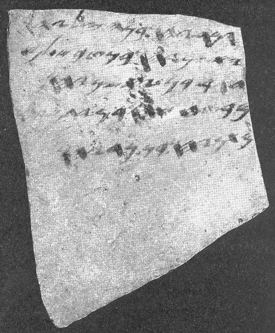
Letter 1
Letter 1 is a list of names. It may have been a list of witnesses to accompany Letter VIII. Some of these names were already known from Scripture, but they are not used here of the same persons. The list is as follows: Gemariah son of Hissiliah Jaazaniah son of Tobshillem Hagab son of Jaazaniah Mibtahiah son of Jeremiah Mattaniah son of Neriah

Letter 2
Letter 2 is a brief note in which the writer is declaring his innocence concerning a charge laid against him. It reads:To my lord Jaush: May the Lord (Yhwh i.e., Jehovah) soon let my lord hear pleasant tidings! Who am I, thy slave, a dog, that thou hast remembered me? May the Lord investigate (and punish me) if I have spoken a thing, of which I did not even know.
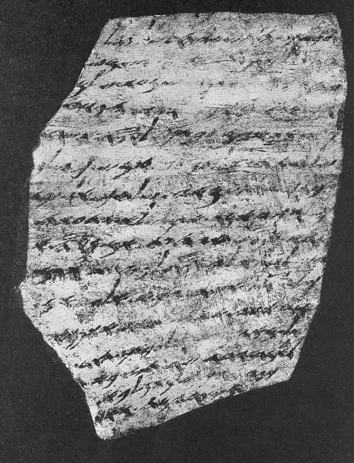
Letter 3
Letter III is one of the best preserved letters, and, as we will see later, names persons known in Scripture. It reads thus: (Paragraphs are supplied in the translation to give greater clarity.)
Thy slave Hoshaiah writes to inform his lord Jaush. May the Lord give thee prosperous tidings!
And now, I have written to the seer, referring to the letter which thou sentest to me yesterday, and have told him that my heart is sick since I had thy letter, and that I declare: “My lord, I cannot read a letter. The Lord liveth (to punish me) if anyone has tried to read me a letter. I have not read any letter which came to me, nor seen anything of it.“
And I have been told that the Commander of the army, Achbor, (Dr. J. W. Jack reads “Khephiriah” instead of “Achhor,” with a good show of reason. See Palesine Exploration Quarterly, July, 1938, pp. 174-175) the son of Elnathan, has gone down to Egypt, and he has sent an order to take Hodaviah, the son of Ahijah and his men from here.
And the letter which Nedabiah, grandson (or grand-nephew) of the King, has brought from the prophet to Shallum, the son of Jaddua (or Jada) , saying, “Beware!” have I sent to thee.
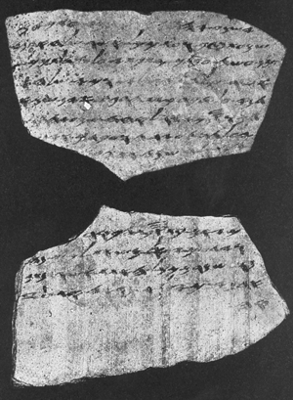
Letter 4
Letter 4 deals with military orders. It is important since it reveals the identity of Tell ed-Duweir as Lachish. The letter follows:
May the Lord soon let my lord hear good tidings!
I have carried out all the instructions you have sent me, and have recorded on the page all that you ordered me. You instructed me also about the rest house, but there is nobody there. And Shemaiah has taken Semachiah and brought him up to the city (Jerusalem), and I will write and find out where he is. Because if on his rounds (turnings) he had inspected, he would have known that we are watching for the signal-stations of Lachish, according to all the signals you are giving, because we cannot see the signals of Azekah.

Letter 5
In Letter V the writer is again earnestly protesting his innocence. He writes:
May the Lord soon let my [lord] hear good and pleasant tidings!
Who am I, thy slave, a dog, that thou [hast s]ent me ….iah’s le[tters ?] [And now] I have returned the letters to thee.
May the Lord tell thee what has [happenned]! Who am I, that I should curse the king’s seed in (the name of) the Lord?
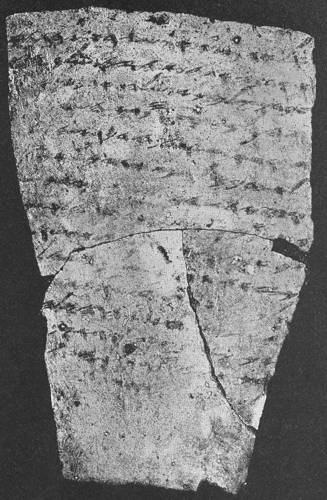
Letter 6
Letter VI, which runs as follows, tells us more about the prophet:
To my lord Jaush. May the Lord let (us) see thee in prosperity! Who am I, thy slave, a dog, that thou hast sent me the [lett]er of the King and the letters of the offic[ers, (The same word here is translated ‘princes’ in Jeremiah 38:4, Dr. J. W. Jack) say]ing: “Read, I pray thee, and (thou wilt) see (that) the words of the [prophet] are not good, (liable) to loosen (“weaken” suggested by Dr. J. W. Jack) the hands, [to make] sink the hands of the coun[try and] the city.” (Dr. J. W. Jack translates: “the hands of the m[en in the] city.”) My lord, wilt thou not write to [them saying]: “Why should ye do thus: … ?”
… The Lord thy God liveth, and my l[or]d liveth (to punish) if thy slave has read the letter or got [anyone] to rea[d the letter or s]een [anything of it.]

Letter 7
Letters VII and VIII are not well preserved. The handwriting on VIII resembles Letter I. Letter IX is somewhat similar to Letter V. Letters X to XV are very fragmentary.
Letter XVI is also only a broken fragment. However, line 5 supplies us with just a portion of the prophet’s name, thus:
[… . i]ah the prophet.
This is not, however, any great help in identifying the prophet. So many names at that time concluded with “iah.” There was Urijah the prophet (Jeremiah 26:20-23); Hananiah the prophet (Jeremiah 28), and Jeremiah himself.

Letter XVII
Letter XVII, another tiny fragment, contains a few letters out of three lines of the letter. Line 3 gives us just the name:
[. _… Je]remiah […_ .]
It is impossible now to know whether this was Jeremiah the prophet, or some other Jeremiah.

Lettter XVIII
Letter XVIII gives a few words, which may have been a postscript to Letter VI. It states:
This evening, [when cometh Tob]shillem, (I) shall send thy letter up to the city (i.e., Jerusalem).
THE WRITER HOSHAIAH
From these letters we gather that Hoshaiah, the writer, was stationed at some point between Lachish and Jerusalem. He was thus responsible for the forwarding of letters passing between these centres. Of course, he was not to read the correspondence passing through his hands.
Prof. Torczyner has suggested Kirjath-jearim as Hoshaiah’s post. This would place Hoshaiah at the home town of Urijah the prophet (Jeremiah 26:20), and just at the boundary of the tribe of Benjamin. But Dr. J. W. Jack points out that Tell Sandahanna, four or five miles northeast of Lachish, might well have been Hoshaiah’s station. This place was near enough to both Lachish and Azekah for signals to be visible. Also excavations indicate that the latter place contained military barracks.
Hoshaiah, we can see, has been charged with reading a letter, and is protesting his innocence.
It is important to notice that this is directly involved with “the seer” or prophet, for Hoshaiah writes direct to the seer declaring his plight, and obviously hopes to obtain his aid. This letter to the seer he sent the same day as Letter III, or the day before at the earliest. At the same time he sends to Jaush the prophet’s warning letter to Shallum.
It is evident letters were being easily sent over the country, in spite of it being a time of war.
WHO WAS “THE PROPHET”?
Scholars are divided in opinion at present as to who the prophet of the Lachish Letters was. Some consider him to be the Urijah of Jeremiah 26:20-23- Others think the prophet was Jeremiah. Those who hold to the full inspiration of the Scriptures will probably agree that the prophet is Jeremiah.
Early in 604 B.C. the first arrest of Jeremiah occurred, as we have already seen. At his trial two precedents were cited. One was the case of Micah the Morasthite, who prophesied during the reign of Hezekiah. The second case was that of Urijah, who prophesied during the reign of Jehoiakim. As a future event cannot be cited as a precedent, Urijah’s case must have occurred before 604, the date of Jeremiah’s trial.
The citation of Urijah’s case follows:
And there was also a man that prophesied in the name of the Lord, Urijah the son of Shemaiah of Kirjath-jearim, who prophesied against this city and against this land according to all the words of Jeremiah:
And when Jehoiakim the king, with all his mighty men, and all the princes, heard his words, the king sought to put him to death: but when Urijah heard it, he was afraid, and fled, and went into Egypt;
And Jehoiakim the king sent men into Egypt, namely, Elnathan the son of Achbor, and certain men with him into Egypt.
And they fetched forth Urijah out of Egypt, and brought him unto Jehoiakim the king; who slew him with the sword, and cast his dead body into the graves of the common people. (Jeremiah 26:20-23.)
Prof. Torczyner links this story with the Lachish Letters. In doing so, he moves the martyrdom of Urijah down into the reign of Zedekiah (II). He supposes the name “Jehoiakim” in verses 22, 23 is a copyist’s error, and that it should read “Zedekiah.” Furthermore, he thinks there has been a transposition of names in verse 22, “Elnathan the son of Achbor” having been put instead of “Achbor the son of Elnathan.” This he holds, because he considers the going to Egypt of the Commander of the army in Lachish Letter III to be the same event as Elnathan’s going there to arrest Urijah, as recorded in Jeremiah.
However, we find it necessary to depart from the views of the translator of the Lachish Letters. Not only is the Urijah proposal at variance with the Scriptures, as shown by the alterations it necessitates to the Book of Jeremiah, but it appears to run counter to the Lachish Letters themselves also.
In Letter III Hoshaiah reports, in effect, “I have (just) now written to the seer, referring to the letter which thou sentest to me yesterday.”
This he does when he knows that the Commander of the army “has (already) gone down to Egypt.” Obviously, Hoshaiah was not writing to a seer in hiding 200 miles away in Egypt! The seer could not have been far away, and, clearly, Hoshaiah knew where he was to write to him. Nor does Hoshaiah appear to have any hesitation in revealing that he is in communication with the seer, which would be a rather implicating revelation if the seer was then fleeing from arrest by the king’s officers. There is no hint in any of the Lachish Letters that anyone was about to be seized by the officers of the king.
Letter VI informs us the charge against the prophet was that he was weakening the hands of the country and city, exactly the same as that laid against Jeremiah (Jeremiah 38:4).
Archeological evidence indicates these letters belong to a time just before the city of Lachish fell, and Scripture knows of only one prophet at that time whose words so weakened the hands of the people, and that one was Jeremiah.
When we identify “the prophet” of the Lachish Letters with the prophet of those days, i.e., Jeremiah, we gain what we may well believe to be a fascinating bit of contemporary information concerning Jeremiah’s second imprisonment, when he was kept shut up in the court of the prison by Zedekiah II.
“THE ATMOSPHERE” OF THE LACHISH LETTERS
We have already pointed out that the arrest and imprisonment of Jeremiah, as recorded in chapter 37 most likely occurred early in 588 B.C. He was then kept in the dungeon “many days” until about the beginning of 587, when he was placed in “the court of the prison,” which was in the king’s house (Jeremiah 32:2). Here Jeremiah was able to continue his prophetic work. At this time he bought the field of Hanameel, the son of his uncle Shallum, and predicted that Judah would some day be restored to the land (chap. 32). At that time Lachish and Azekah alone remained of the defenced cities of Judah, outside Jerusalem itself (34:7). During this while, from early in 588 to probably the latter part of 587 B.C., the Chaldeans remained away from Jerusalem “for fear of Pharaoh’s army,” which had come forth from Egypt and landed at Zidon.
It is just at this period, while the siege of Jerusalem was lifted, and the Chaldean army was retired to the north, that we find the atmosphere breathed in the Lachish Letters. Into the circumstances of that period the letters fit as a hand fits into the glove made for it. With the siege relieved, the enemy retired, letters could freely pass forth and back in Judah.
Lachish and Azekah still stood, but would be prepared for a possible renewal of attack. The war-time state of affairs still prevailing would render many articles scarce or unobtainable.
Thus a shortage of papyrus, necessitating recourse to pieces of pottery upon which to write letters, is but what one might reasonably expect.
(It was evidently the view of the late discoverer of the Lachish Letters that pottery fragments were used instead of papyrus because of the war conditions just before the fall of Lachish. See “The Lachish Letters,” by J. L. Starkey, in The Illustrated London News, August 10, 1935. p. 242.)
At this time also it would be possible for the boy-prince Nedabiah to carry a letter into the country for the prophet. Further, it is not unnatural at this juncture to read of the Commander of the army going to Egypt, perhaps to confer with Egypt’s military authorities upon keeping the Chaldaeans from returning from the north, or to seek reinforcements.
It cannot be without significance, where the date of the Lachish Letters is concerned, that another inscribed potsherd, “lying blackened on the floor among the ashes of the destruction” of Lachish, (”Excavations at TeD ed-Duweir,” by C. H. Inge, in Palestine Exploration Quarterly. October 1938, p. 254) found early in 1938, begins with the words: “In the ninth (year) …” We know from Kings and the Book of Jeremiah that the people in Judah numbered the years by the king’s reign. This practice is followed throughout Jeremiah. With no evidence to the contrary, it is natural to conclude that this date on the potsherd refers to the ninth year of Zedekiah II, July, 589, to July, 588 B.C. It would seem from this find that the shortage of papyrus was felt very early during the Babylonian invasion.
Another potsherd, found about the same time and place, likewise inscribed with ink, appears very like the Lachish Letters. However, but little of it is legible.
JEREMIAH IN THE LACHISH LETTERS
When we identify “the prophet” of the Lachish Letters as Jeremiah, we get a story somewhat as follows:
Hoshaiah, an officer at an unnamed outpost, has become involved in a charge of having read a letter not intended for him. In some way, obscure now, this was related to the affairs of “the seer.” Writing to Jaush, his superior in Lachish, Hoshaiah, in Letter III, maintains his innocence of the charge, and reports that he has just written to “the seer” (=Jeremiah) of his difficulty. Obviously Hoshaiahhoped that Jeremiah, with his wide influence, would help to clear him of what he alleges is a false accusation.
Hoshaiah next reports, in Letter III, the passing of Achbor (or Khephiriah), the army commander, the son of Elnathan (evidently the high official of Jehoiakim’s time, Jeremiah 26:22; 36:12, 25), who was on his way to Egypt.
Then Hoshaiah states that he is sending to Jaush a letter which the prophet (Jeremiah) had sent to Shallum, son of Jaddua (or Jada), by Nedabiah, a relative of the king. Thus this important portion brings us into touch with a royal prince, a grandson of the king. (Some scholars read “a servant” of the king. But Prof. Torczyner is emphatic that the rare Hebrew word for “son’s son” or “nephew” is here used (cf. Genesis 21:23; Isaiah 54:22; Job 18:19)
This Nedabiah (Dr. J. W. Jack reads “_Tobia_h,” by taking the Hebrew 1etters N and D at the beginning of the name to be T. However, the photograph of Letter rn in Prof. Torczyner’s volume looks more like ND than T.)is evidently the Nadabiah of I. Chronicles 3:18. He was the son of Jehoiachin and the grandson of King Jehoiakim (I. Chronicles 3:16), and grand-nephew of Zedekiah II.
Nedabiah is the last named son of Jehoiachin in this list. This may mean he was the youngest, but it is well known that children often are not set down in the order of their ages in Scripture genealogies. It would not be impossible therefore for Nedabiah to be the oldest. As Jehoiachin was 18 years old in 598 B.C. (II Kings 24:8), Nedabiah at that date may have been two or perhaps three years of age.
Now the days that Jeremiah was kept confined to the court of the prison were days of increasing darkness to the prophet. He kept predicting the return of the Chaldaeans to the siege, and his words were just then anything but popular. Wishing to give some warning to Shallum, son of Jaddua (or Jada), possibly his uncle of that name (Jeremiah 32:7), and unable to go himself, being “shut up in the court of the prison,”
Jeremiah evidently sought someone to take a letter for him to Shallum. The prison court “was in the king of Judah’s house” (32:2), and from those about him it seems that the prophet chose the boy-prince Nedabiah, then 13 or 14 years of age, and asked him to take his letter to Shallum.
Nedabiah took the letter. Whether it reached its destination we do not know. In some way it came into Hoshaiah’s hands at his outpost. He sent it on to Jaush, saying, “And the letter which Nedabiah, the King’s grandson (or grandnephew) has brought from the prophet to Shallum the son of Jaddua, saying, ‘Beware!’ have I sent to thee.“
Letter IV, we may infer, was written after Azekah had fallen before the Babylonian forces. Its signals were no longer visible. If this is so, then this letter was written later than the events in Jeremiah 34:1-7, where both Lachish and Azekah were still standing. Evidently the Chaldaeans had now returned, as Jeremiah had been predicting (Jeremiah 34:21, 22; 37:6-10).
But the activities of Jeremiah in his prophetic work while in the prison court were drawing upon him the great wrath of the princes. It may be significant that Hoshaiah (Letter V) was charged with cursing the king’s, seed. Earlier the royal seed had actually had a curse placed upon it through Jeremiah the prophet (Jeremiah 22:29, 30), whom Hoshaiah counted upon as a helper and aid in his difficulties. It seems clear that Hoshaiah was one of Jeremiah’s sympathizers or even a follower.
Due to Jeremiah’s warnings, a large number of people had forsaken Jerusalem and gone over to the Babylonians. Feelings would naturally run high during the war fever. Anyone suspected of being pro-Babylonian would be looked upon as almost a traitor to his country. Jeremiah had not only predicted the fall of Jerusalem to the Babylonian forces, but had said: “Thus saith the Lord, He that remaineth in this city shall die by the sword, by the famine, and by the pestilence: but he that goeth forth to the Chaldaeans shall live; for he shall have his life for a prey, and shall live.” (Jeremiah 38:2). Wrought up war excitement would keep many from recognizing the truth of his words, and such a statement would certainly be looked upon as treachery and desertion-propaganda, or worse. It is, therefore, not surprising that the princes lodged a com plaint with the King, petitioning the silencing of Jeremiah by death. Zedekiah committed Jeremiah into their hands.
Evidently fearing the arousing of public opinion by an open execution, for Jeremiah was widely known, the princes cast the prophet into the dungeon of Malchiah, where he might quietly perish in the mire at the bottom.
About this time letters from the King and his officers carried news of these events and the charges laid against Jeremiah to Jaush in Lachish. Jaush forwarded these letters to Hoshaiah at his outpost, requesting him to read the charges for himself. Thus it seems evident that Letter VI, which is Hoshaiah’s reply to Jaush, is a most important historical document, contemporary with and actually referring to events in chapter thirty eight of Jeremiah.
The charges against the prophet as recorded in each case form a very close parallel, thus:
LACHISH LETTER VI
Who am I, thy slave, a dog, that thou hast sent me the letter of the King and the letters of the officers, saying: “Read, I pray thee, and thou wilt see that words of the prophet are not good, (liable) to weaken the hands, to make sink the hands of the men in city and country.” (This rendering here in part follows Dr. J. W. Jack in The Palestine Exploration Quarterly, July, 1938, pp 176, 181.)
JEREMIAH 38:4.
Therefore the princes said unto the king, We beseech thee, let this man be put to death: for thus he weakeneth the hands of the men of war that remain in this City, and the hands of all the people in speaking such words unto them: for this man seeketh not the welfare of this people, but the hurt.
Hoshaiah unhesitatingly shows his sympathies with the persecuted prophet, by writing back to Jaush: “My lord, wilt thou not write to them (the princes), saying: ‘Why should ye do thus…?’” After a break where the writing has become illegible, Hoshaiah concludes his letter with another reference to his innocence of having read a missive not intended for him. As remarked before, this had something to do with the prophet. Had we both sides of the correspondence we could understand this better. This much, however, we do gather from Hoshaiah’s reply. The prophet had support even among the military officers, of which Hoshaiah himself is an instance. He even expects Jaush to protest against the treatment accorded the prophet.
This agrees perfectly with the picture of conditions preserved in Jeremiah 38. There Ebed-melech, the kindly-hearted Ethiopian eunuch of the King’s household, boldly speaks for the rescue of Jeremiah from the miry dungeon (Jeremiah 38:7-13).
It could not have been very long after this that the city of Lachish fell before the Chaldaeans. The letters of Hoshaiah, which so perfectly fit into the story of Jeremiah, were left scattered on the floor of the guard room by the gate, and became buried in the ashes as the place was burnt down. Then 2,500 years passed over the broken and slowly fading letters. No man’s eye saw them: they were forgotten out of mind. The Book of Jeremiah alone remained to make any definite reference to the last days of Lachish, for it was preserved by Him Who inspired its every word (Psalm 12:6, 7).
Then suddenly, in a skeptical age which questions the truth and the accuracy of the inspired Scriptures, these letters of Hoshaiah have arisen from the dust of the centuries, to add their quota to the testimony of genuine science that the Bible is true. In not a line nor even a word do these contemporary records contradict Scripture. The way in which these letters blend with the writings of Jeremiah, the fact that the same atmosphere is breathed in both, similar conditions are pictured, etc., is positive evidence of the accuracy of the Book of Jeremiah. The letters cannot be said to supply any support for the theory that Jeremiah’s writings have suffered at the hands of copyists.
“For ever, 0 Lord, Thy word is settled in heaven” (Psalm 69:89).




David J. Gibson
Copyright 2004, 2019 CanBooks




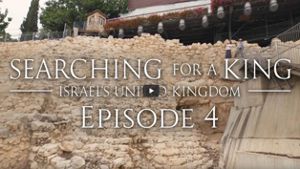
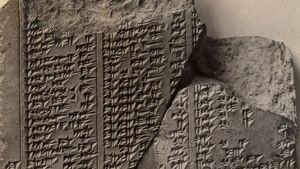

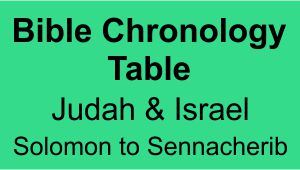
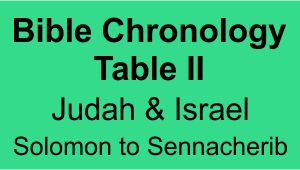
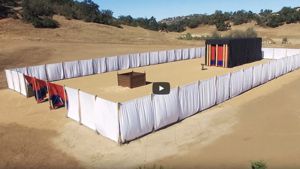
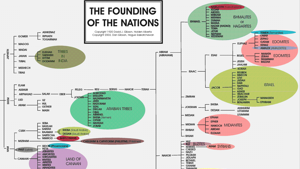

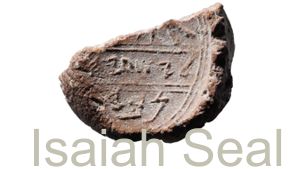
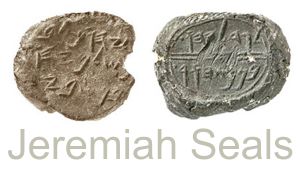


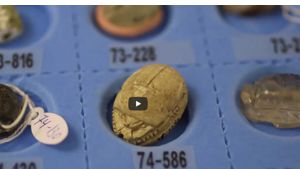


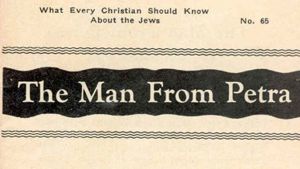

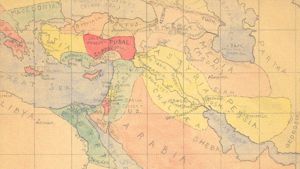


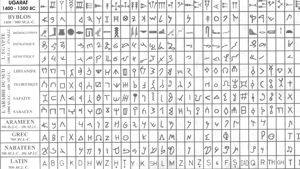
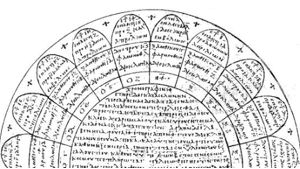
Page Discussion
Membership is required to comment. Membership is free of charge and available to everyone over the age of 16. Just click SignUp, or make a comment below. You will need a user name and a password. The system will automatically send a code to your email address. It should arrive in a few minutes. Enter the code, and you are finished.
Members who post adverts or use inappropriate language or make disrespectful comments will have their membership removed and be barred from the site. By becoming a member you agree to our Terms of Use and our Privacy, Cookies & Ad Policies. Remember that we will never, under any circumstances, sell or give your email address or private information to anyone unless required by law. Please keep your comments on topic. Thanks!